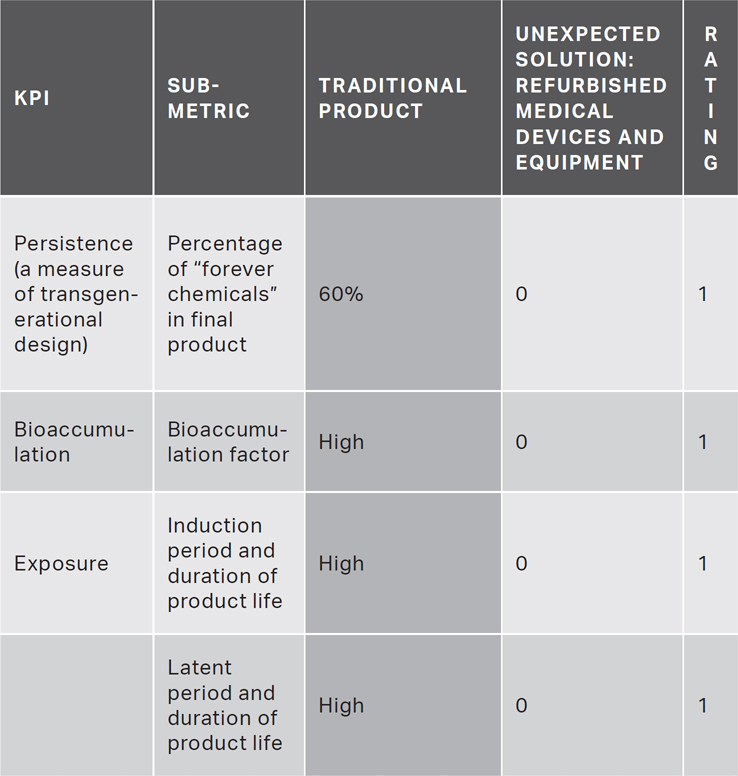Example Scorecards
In the next sections, we have provided examples of completed scorecards from the case studies described previously in this book.
Coastwide Labs/Staples
As described within this book, Coastwide Laboratories (later acquired by Staples) created a sustainability transformation within its organization. The scorecard here was leveraged by Coastwide to understand the operational sustainability of their successful Sustainable Earth line of products. This evaluation is an assessment of the chemical formulation of the Sustainable Earth line as well as the business operations of the same service line.
SCORECARD COMPONENT
PART 1: WASTE PREVENTION
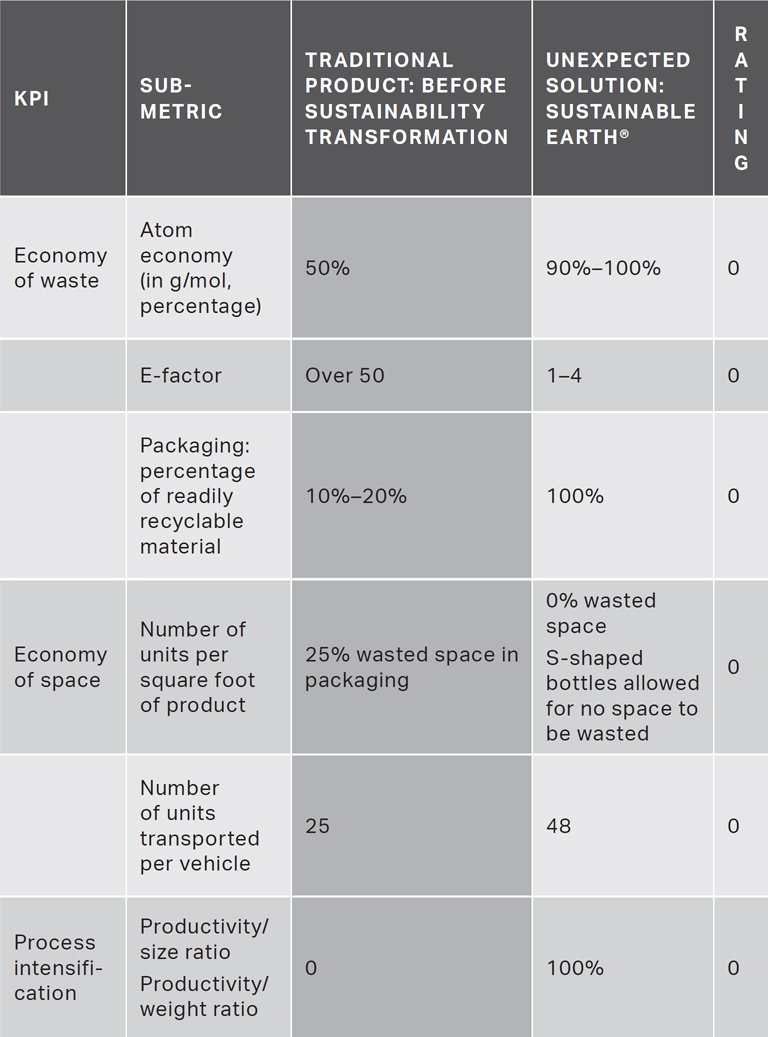
Part 1 qualitative analysis: Prior to the sustainability transformation of Sustainable Earth, the service line demonstrated waste in two main areas:
▪ The chemical formulation itself
▪ Packaging and transportation
The firm took steps to alter the chemical formulation along the lines of the green chemistry that specifically improved the atom economy, E-factor, and process intensification (waste metrics of chemical formulations) so as to reduce waste and create savings related to operational expenses.
Within packaging, the firm altered the shape of the bottles that were used to transport the cleaning material. The new S-shaped bottles with optimized bottle thickness not only enabled 25 percent more product to fit within a shipping container but also reduced the breakage rate of bottles during transport. This in and of itself optimized the number of total units transported per vehicle, bringing the eventual number of boxes transported up to forty-eight (from an original twenty-five). This increased operational savings further by reducing the number of trips and fuel consumption in transporting the product to suppliers.
SCORECARD COMPONENT
PART 2: MAXIMIZING EFFICIENCY AND PERFORMANCE
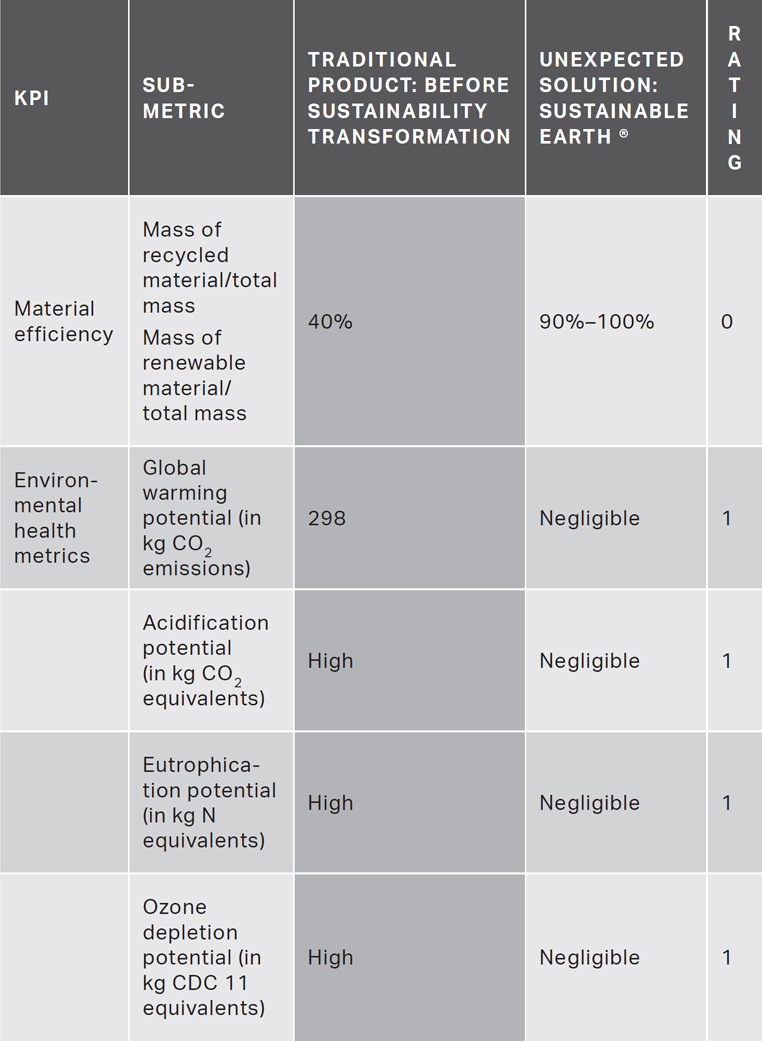
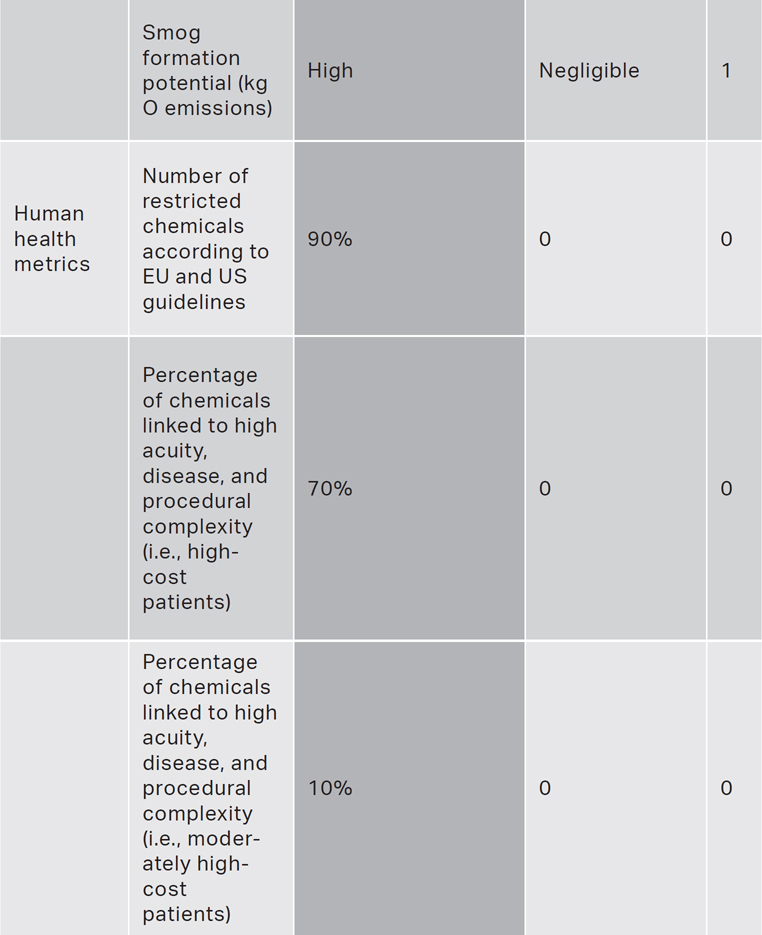

Part 2 discussion: Coastwide created a positive environmental and human health impact by eliminating 100 percent of toxic chemicals that were associated with cancer or designed to persist in the human body throughout generations (demonstrating transgenerational design, as we described earlier in this book). Toxic chemical compounds such as FAE blends, APG, AO, 9.5 EO, ethylene glycol monobutyl ether, branched alkyl benzene sulfonates, and endocrine-disrupting chemicals were all eliminated and replaced with environmentally and biologically benign formulations. Further, this new methodology required 50 percent less water for rinsing after use of the cleaning products.1
As reported by Darden Business Publishing at University of Virginia, these sustainability transformations that “assumed lower risk through use of benign products would ultimately translate into lower insurance premiums, lower handling costs, fewer sick days, less expense for protective equipment, lower regulatory burdens and expenses, elimination of hazardous material handling training, and lower waste disposal costs. TriMet and a few school districts had already reported a reduction in the number of sick days ascribed to chemical-related injuries or sickness.” Further, Darden reported that “the Sustainable Earth line enabled Coastwide to lower its customers’ costs for maintenance by offering system solutions. Higher dilution rates for chemicals, dispensing units that eliminated overuse, improved safety for the end user, and less lost work time because of health problems associated with chemical exposure were reported.
TriMet, the Portland, Oregon, metropolitan area’s municipal bus and light rail system, reduced its number of cleaning products from twenty-two to four by switching to Sustainable Earth. Initial cleaning-chemical cost savings to the municipality amounted to 70 percent, not including training cost savings associated with the inventory simplification. In 2006, the Sustainable Earth line performed as well as or better than the market category leaders while realizing a gross margin more than 40 percent higher than on the company’s conventional cleaners.”2
SCORECARD COMPONENT
PART 3: RENEWABLE INPUTS

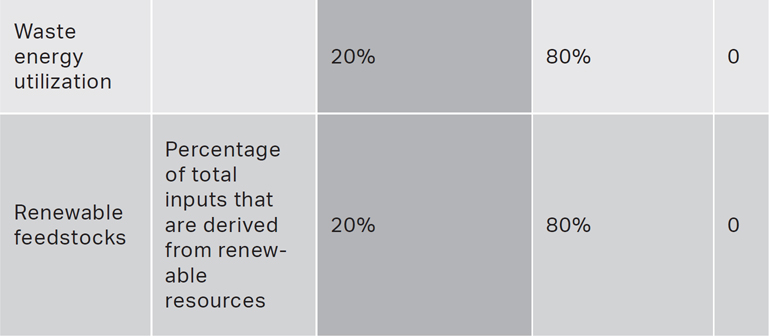
Part 3 discussion: The new chemical formulations were readily biodegradable and had nearly zero volatile compounds. Volatile compounds are substances that evaporate at room temperature and in many cases persist in the environment and even act as biomarkers for certain cancers. The sustainability transformation brought these chemicals down to zero and thereby reduced exposure as well.
SCORECARD COMPONENT
PART 4: SAFE DEGRADATION

Part 4 discussion: The firm scaled the input of renewable resources for the production of chemical formulations as well as the use of waste energy to capture otherwise lost energy The only area where renewable energy was not leveraged was in the trucks that transported the goods to suppliers.
P2Science
This assessment was conducted by P2Science in Nagatuck, Connecticut, to compare its product Citropol® H to a traditional input to cosmetics and hair products: silicones (specifically, dimethicones). Silicones are chemically inert components of cosmetics that function to smooth hair and skin, giving foundation and other makeup a smoother, almost air-brushed distribution. They can even help control the thickness of the product that is applied to skin, which helps hold the moisture in the skin and prevent dryness.
SCORECARD COMPONENT
PART 1: WASTE PREVENTION
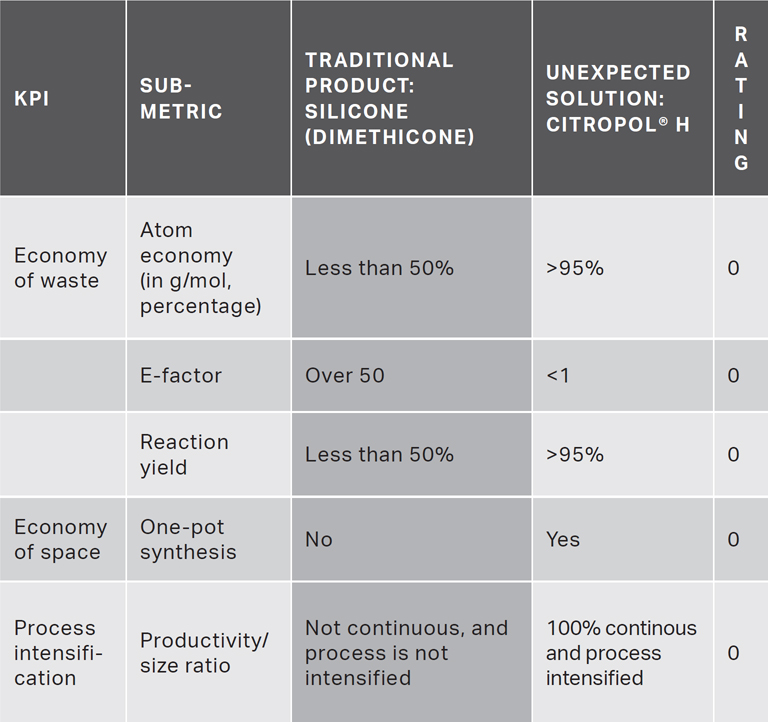
Part 1 qualitative analysis: Traditional silicones (brand agnostic) are typically highly wasteful in the design phase, resulting in low yield in comparison to the waste produced in the chemical reaction. P2Science’s process resulted in over 95 percent yield (i.e., there was minimal chemical waste), and the company even conducted the reaction in one pot to prevent the use of a large volume of reactors and equipment. This metric can have a significant effect on the PP&E (property, plant, and equipment) line item in financial reports.
SCORECARD COMPONENT
PART 2: MAXIMIZING EFFICIENCY AND PERFORMANCE
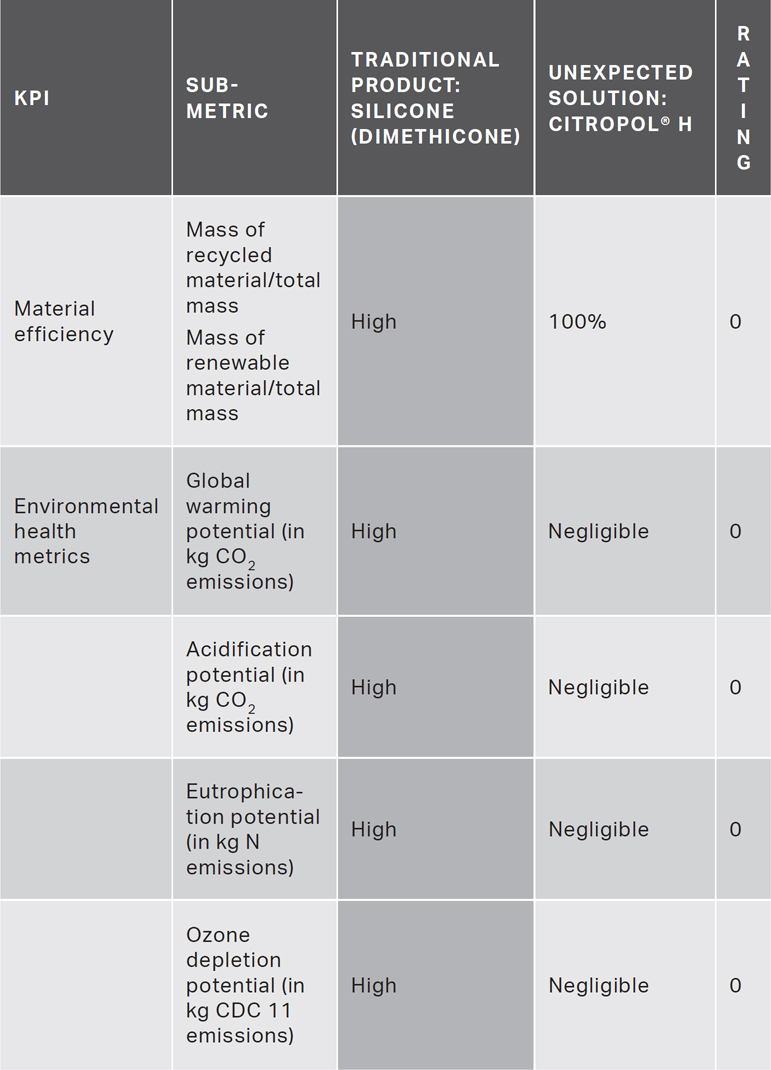
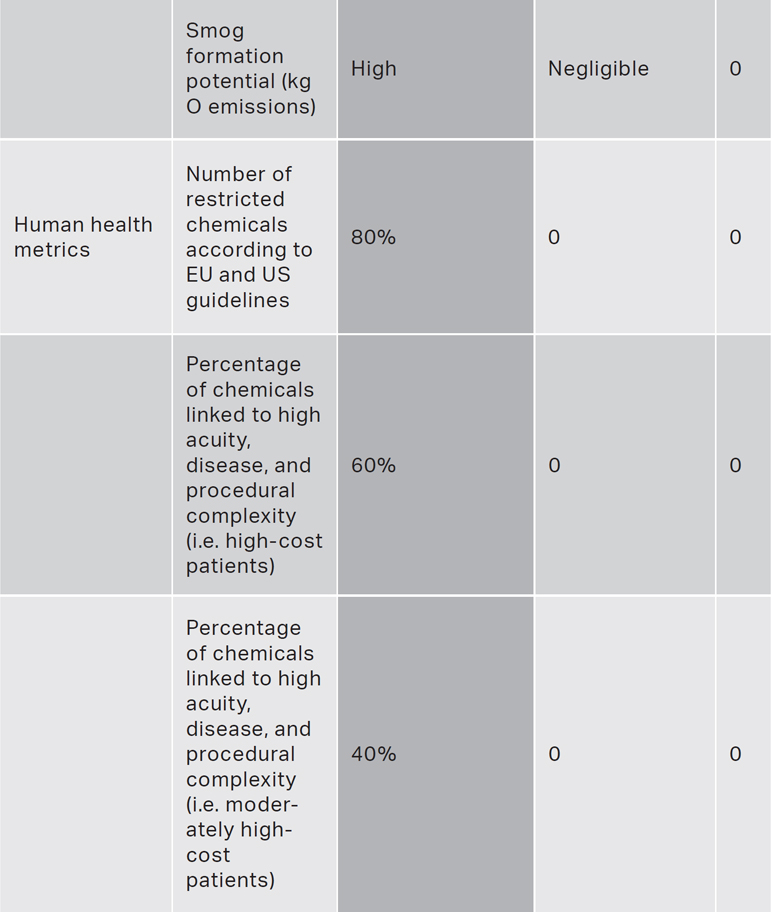

Part 2 qualitative analysis: Most silicones not only degrade as microplastics in the environment but also result in reproductive and other toxicology-related negative externalities. Citropol® H is entirely benign as it relates to toxicology and other high-, moderate-, and even low-risk health effects.
SCORECARD COMPONENT
PART 3: RENEWABLE RESOURCES
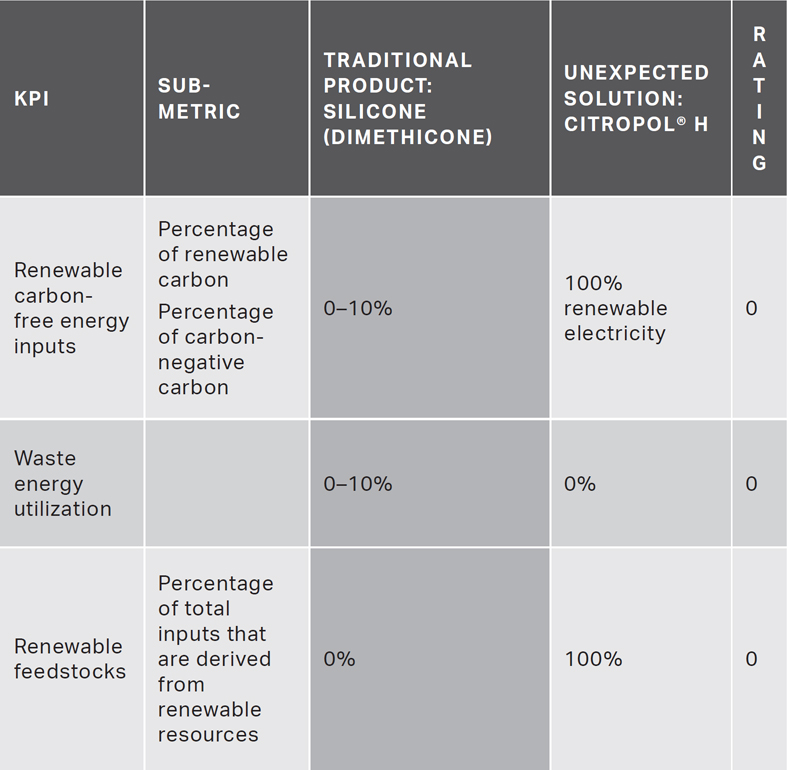
Part 3 qualitative analysis: All supply chain inputs and the entire production of Citropol® H leverage over 95 percent of renewable inputs.
SCORECARD COMPONENT
PART 4: SAFE DEGRADATION
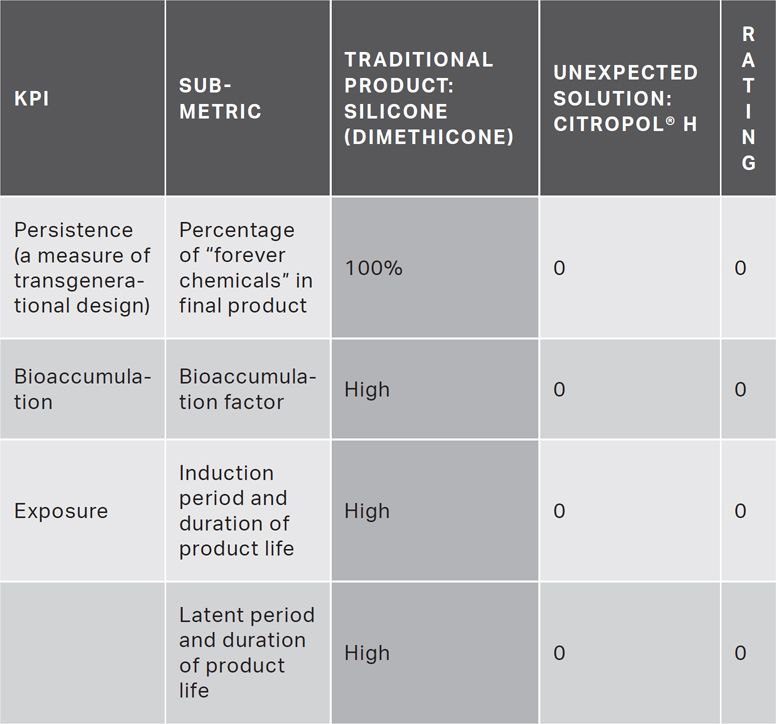
Koninklijke Philips N.V.
This assessment was provided by Philips N.V. to demonstrate the environmental and health-related effectiveness of their upcycling and refurbished medical devices service line.
SCORECARD COMPONENT
PART 1: WASTE PREVENTION
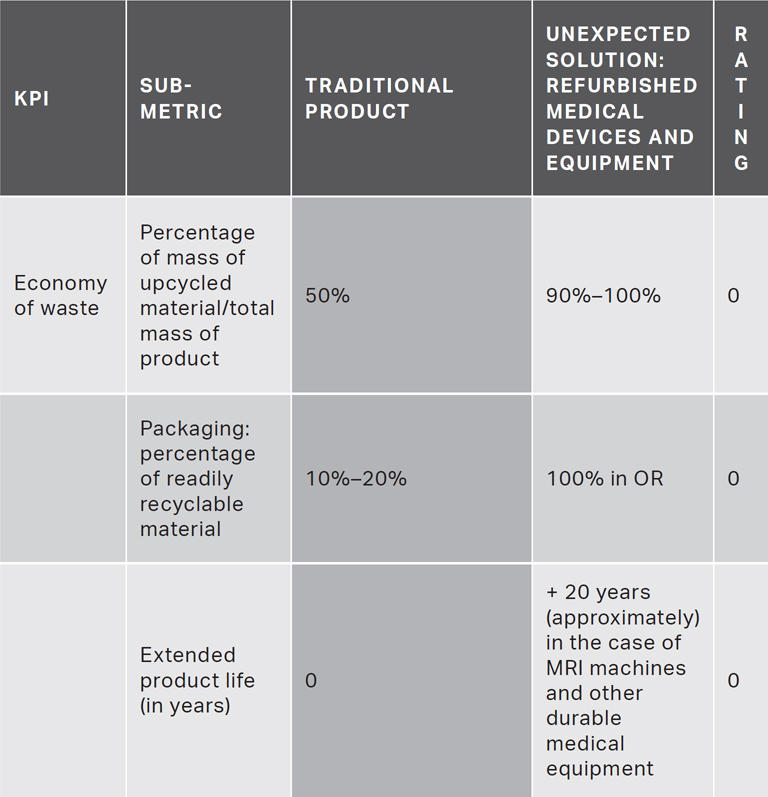
Part 1 qualitative analysis: Prior to the sustainability transformation, Philips had no visibility into its supply chain after the medical devices were collected by end users. By way of introducing a collection-and-refurbishment methodology, the firm created operational expense savings, extended the product life, and were able to leverage revenue through an increased number of sales per product.
SCORECARD COMPONENT
PART 2: MAXIMIZING EFFICIENCY AND PERFORMANCE

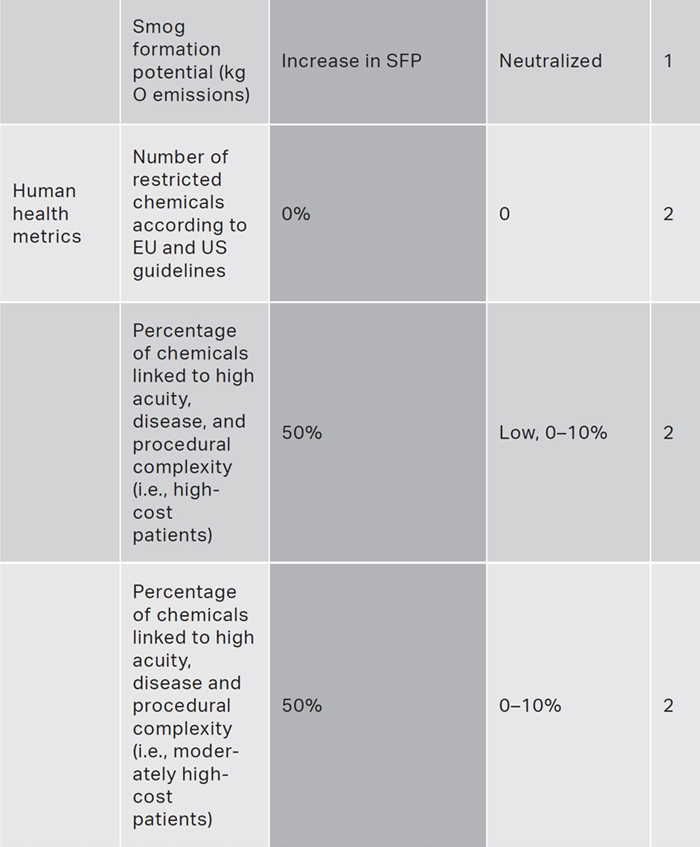

Part 2 qualitative analysis: Reclaiming chemicals and components that would otherwise pose negative health effects in landfills or other modes of end of life, the firm was able to upcycle these components in an environmentally benign manner. This eliminates the health effects to humans by way of groundwater contamination and the like, and keeps unsustainable products in circulation in the economy, ultimately avoiding a graveyard end of life.
SCORECARD COMPONENT
PART 3: RENEWABLE RESOURCES
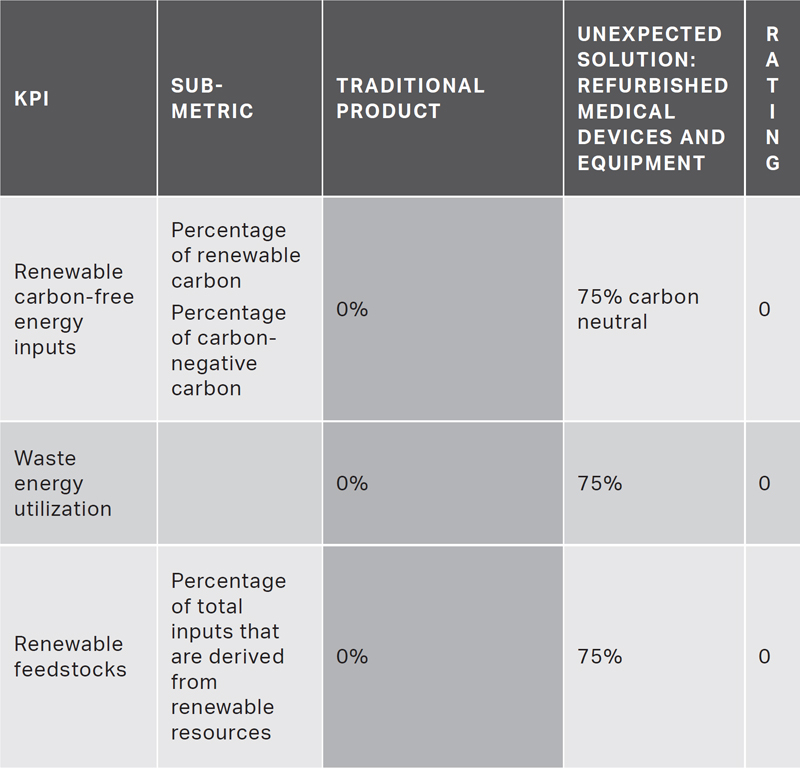
Part 3 qualitative analysis: Philips currently leverages 75 percent renewable energy and is on track to attain 100 percent renewable energy for all business practices.
SCORECARD COMPONENT
PART 4: SAFE DEGRADATION
